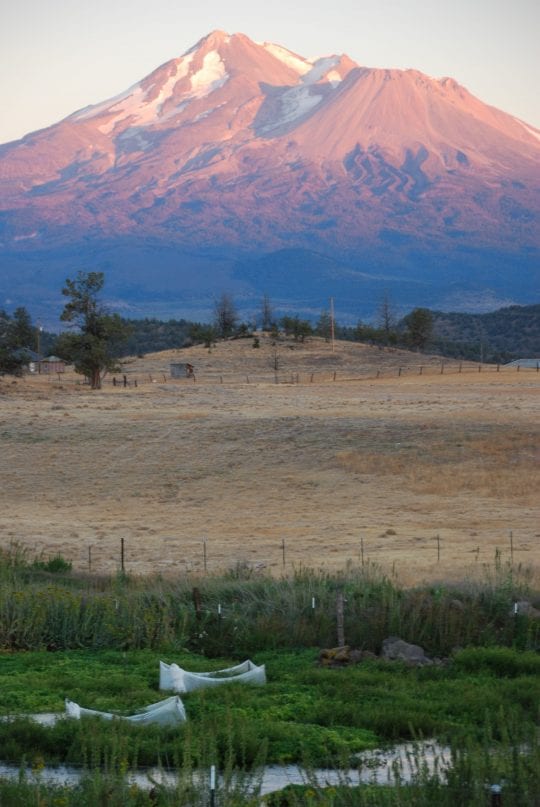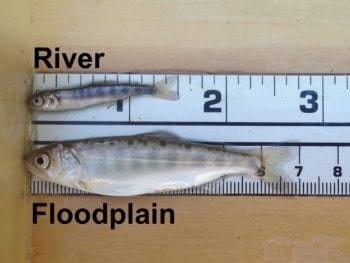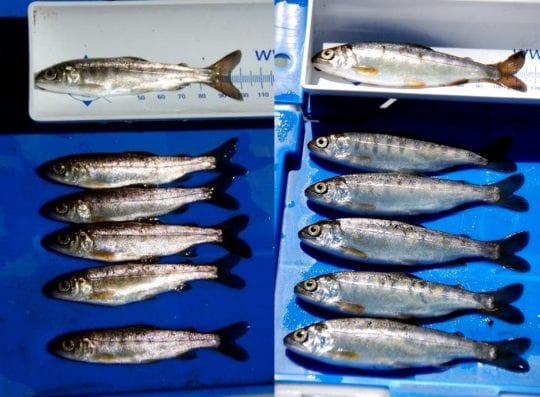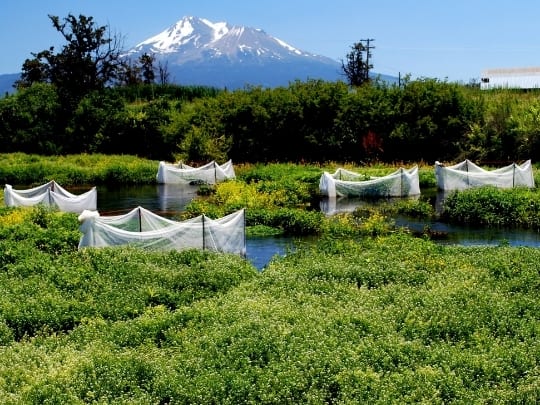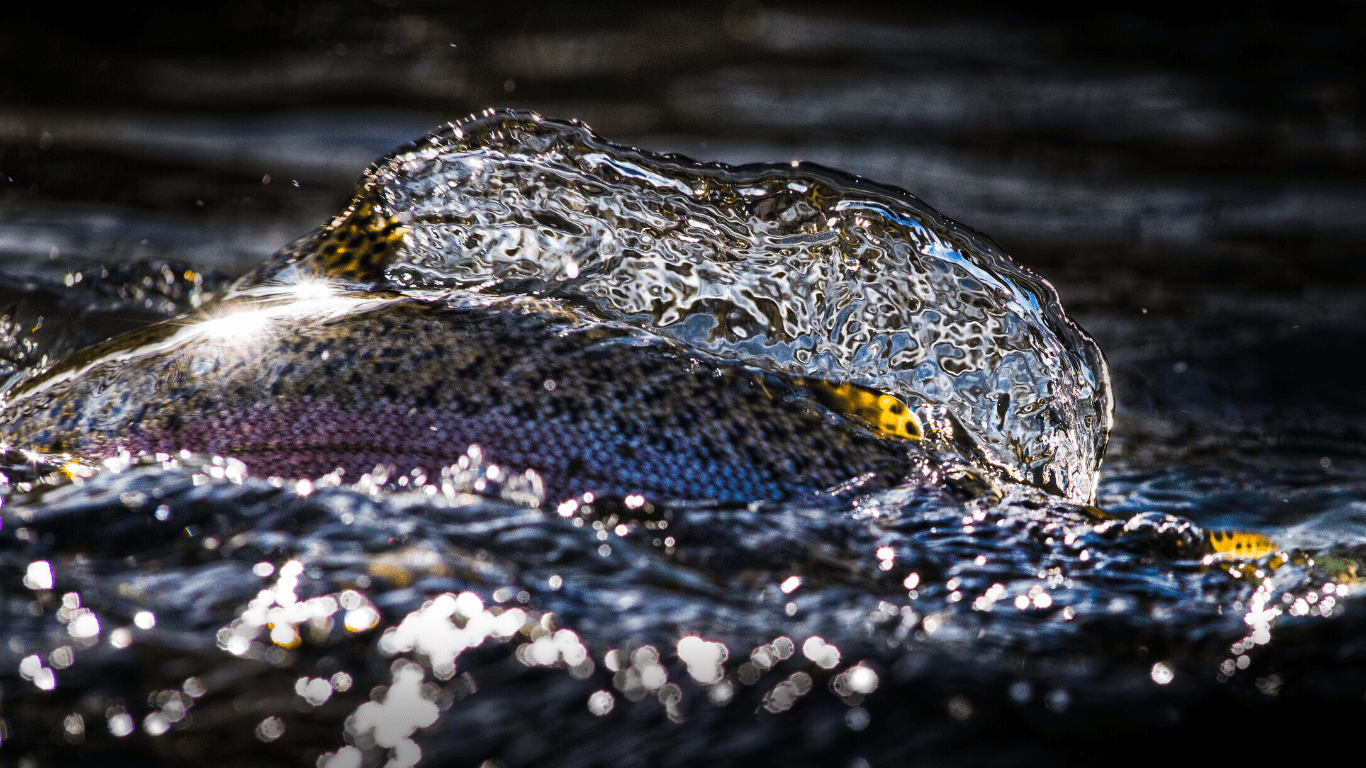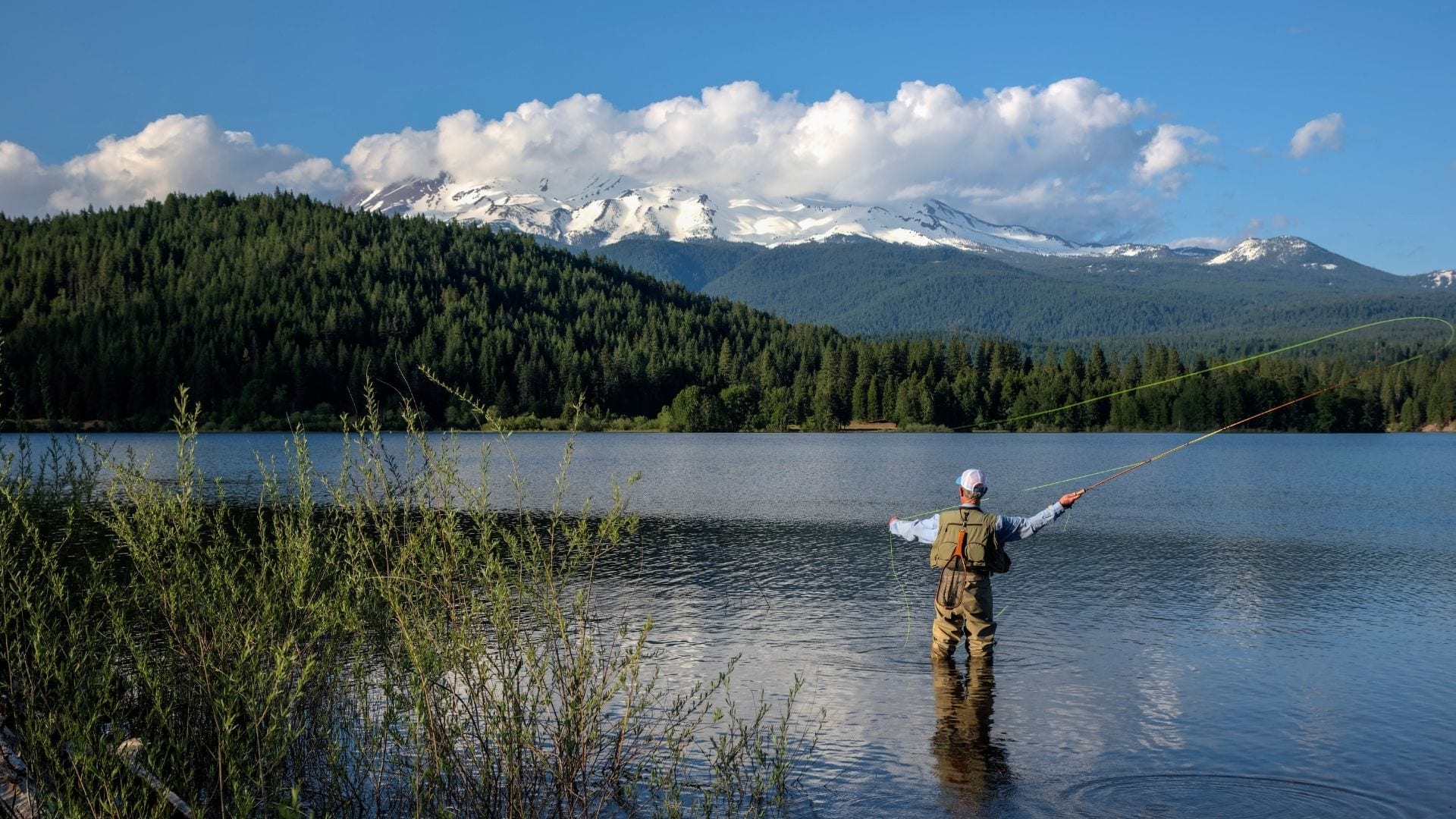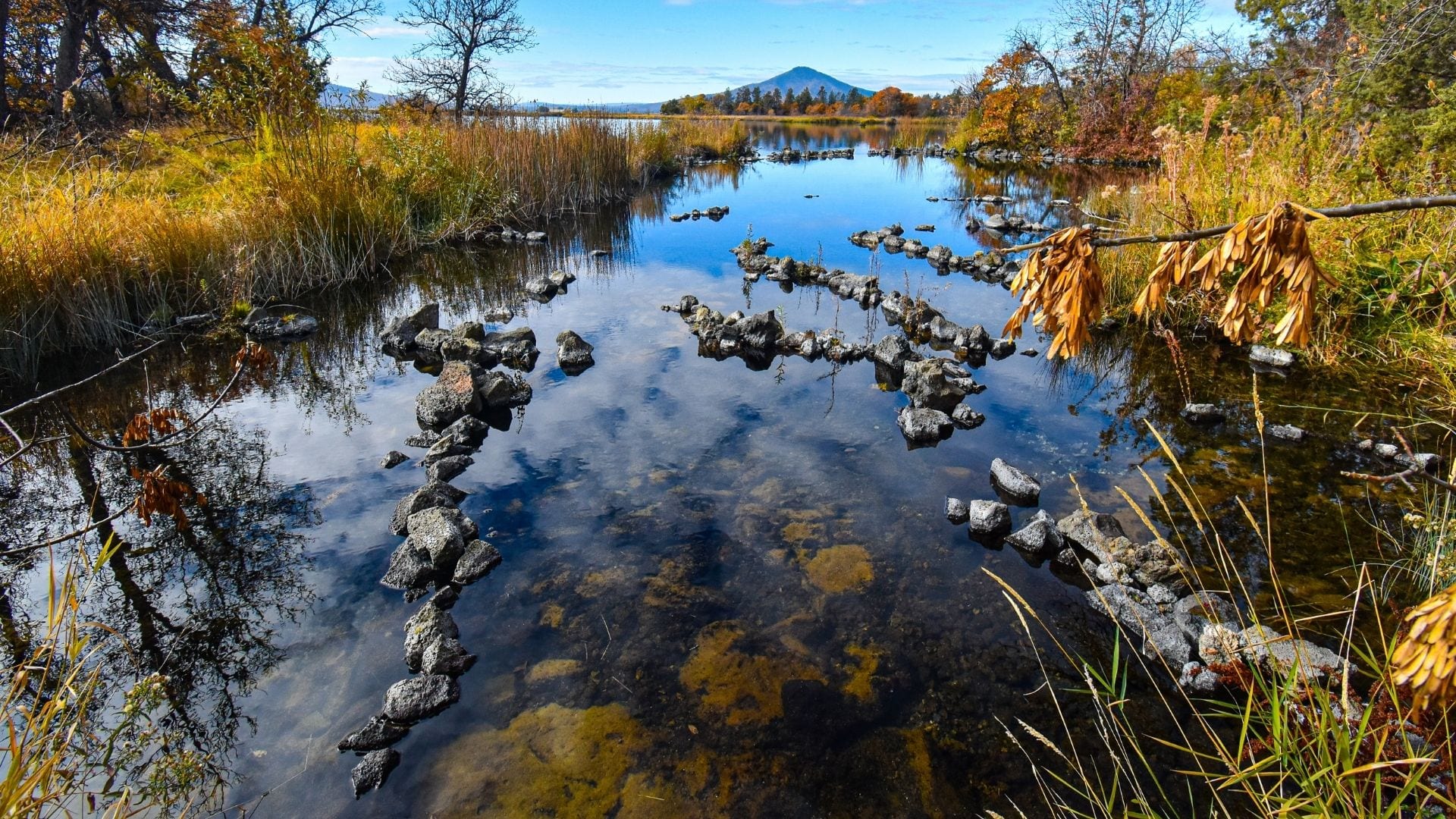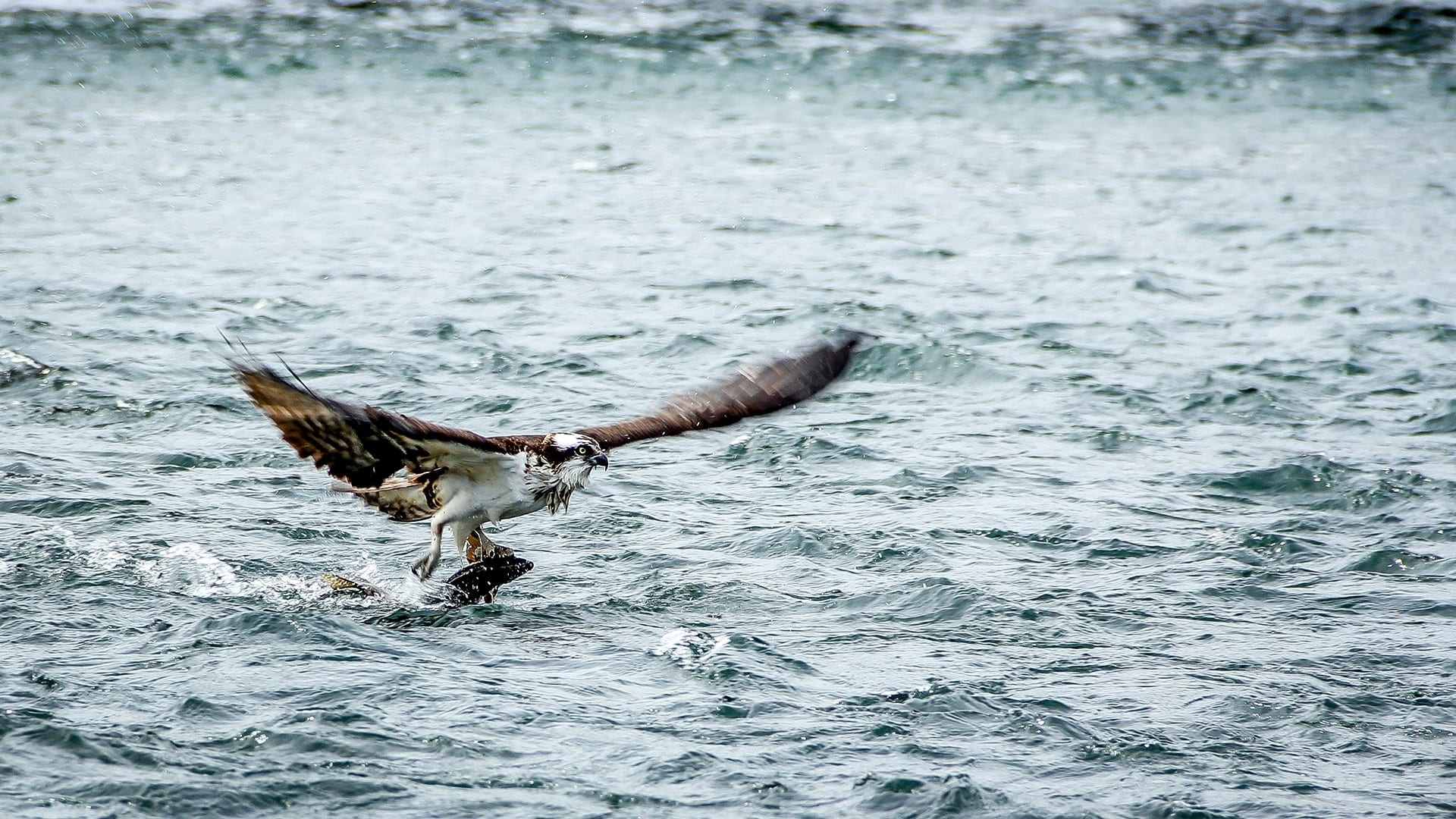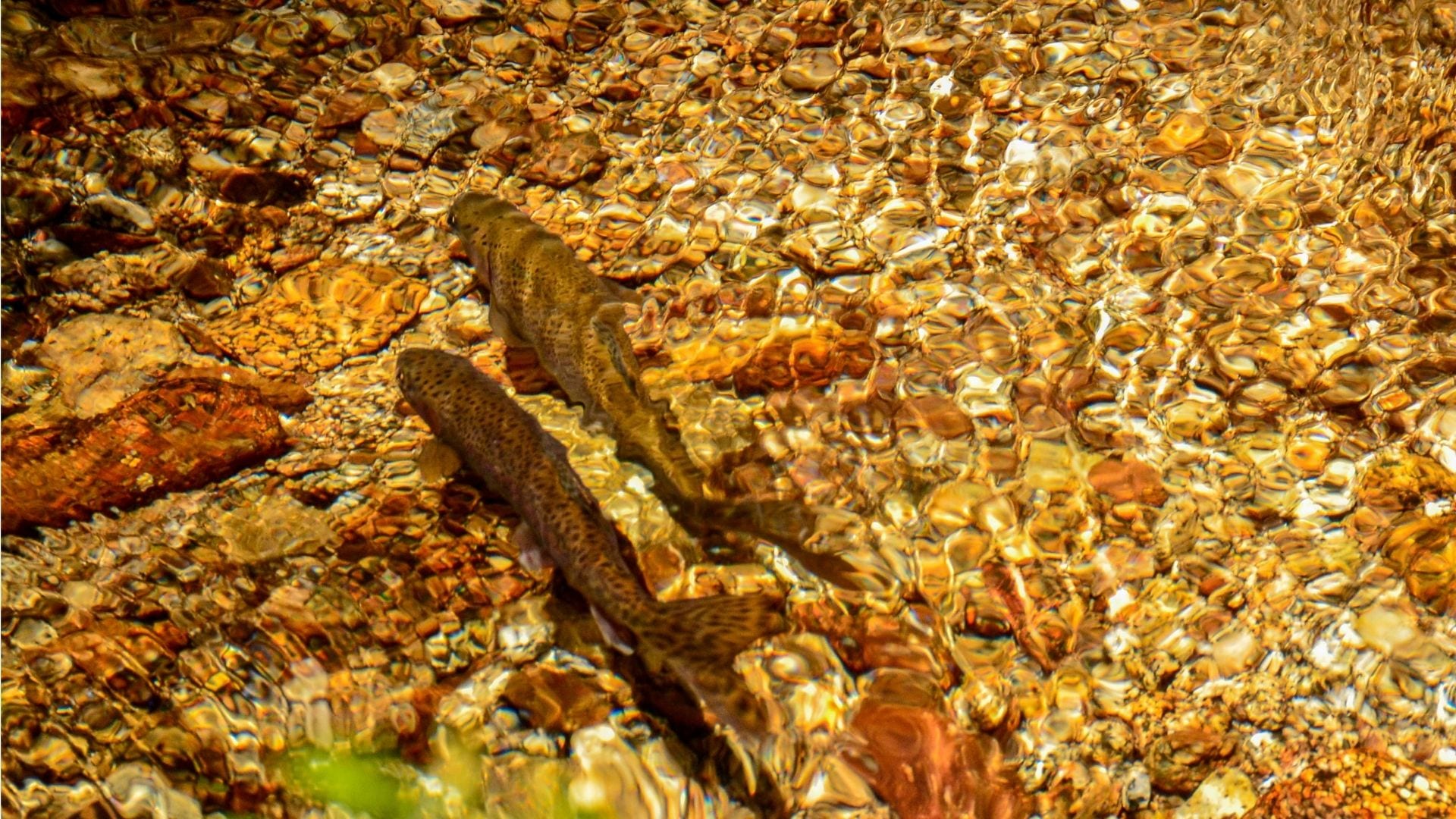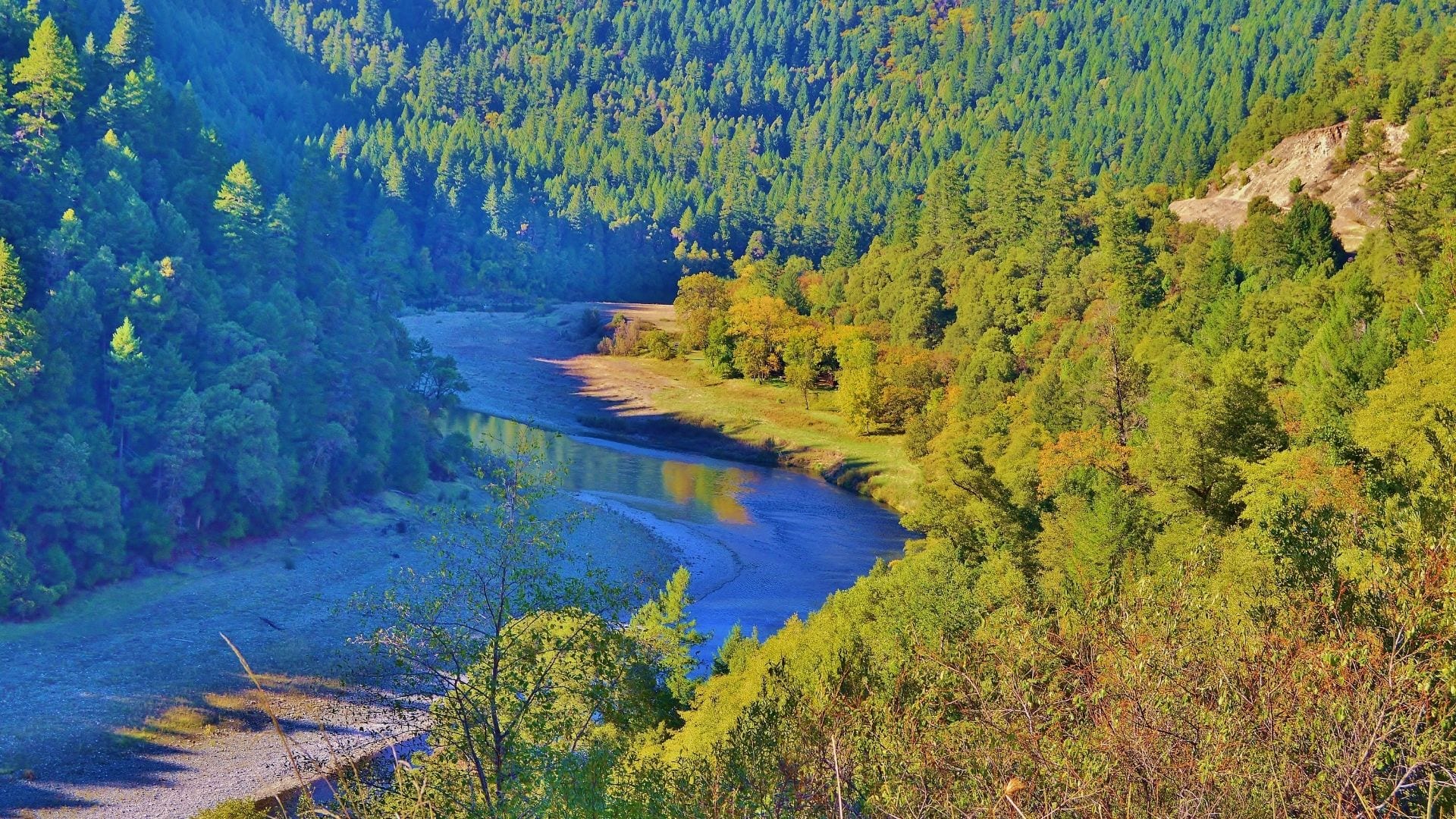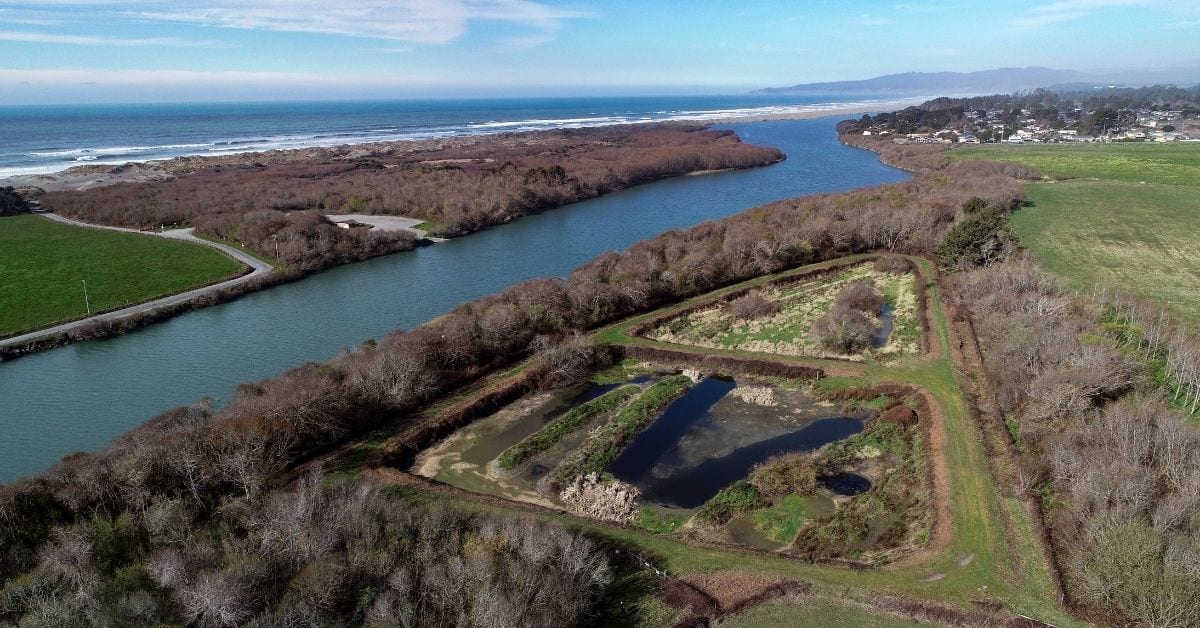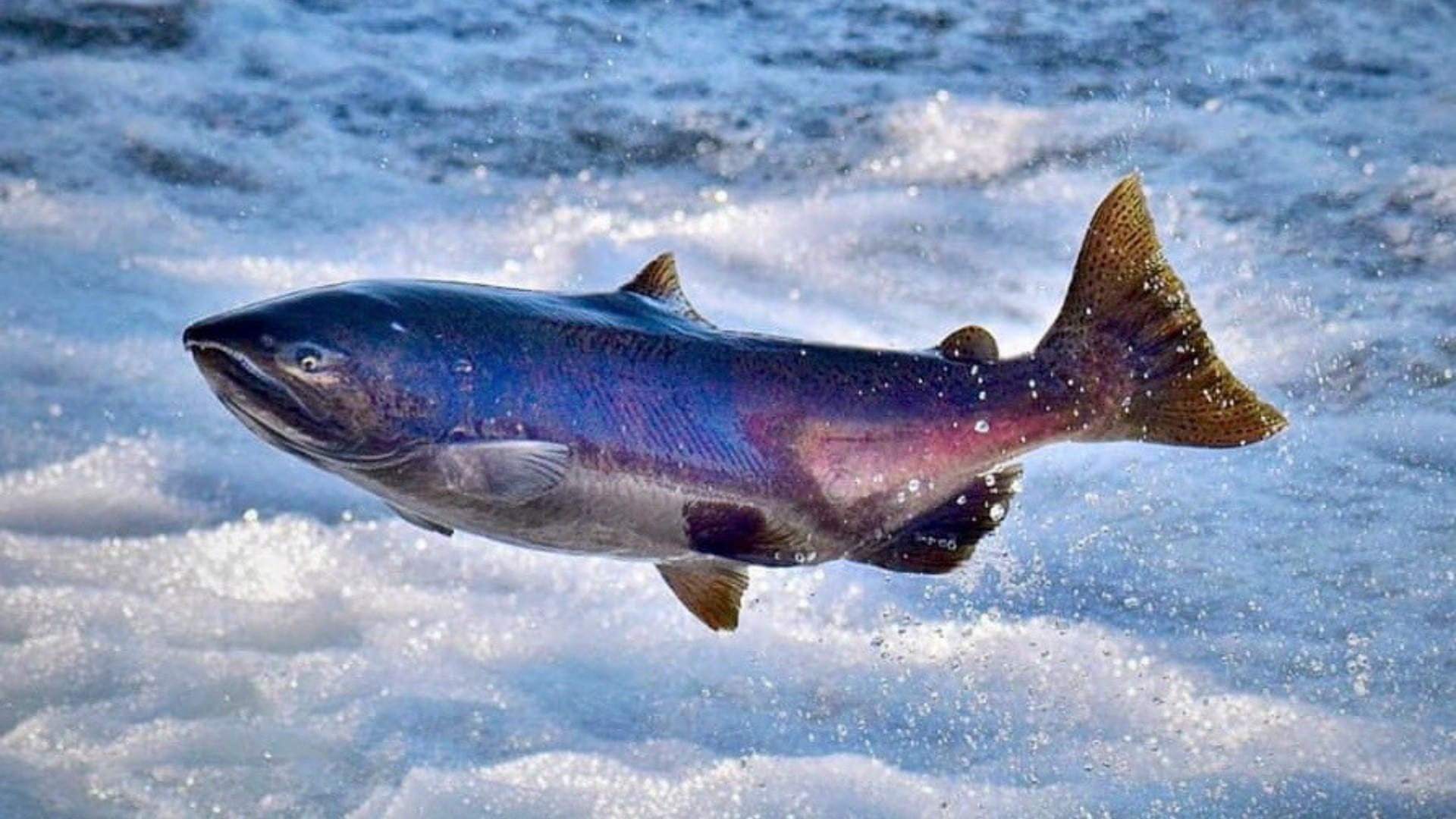By Dr. Rob Lusardi
CalTrout - UC Davis Wild and Coldwater Fish Scientist
Can fish eat their way out of climate change?
About two years ago, I wrote an article on the importance of food for foraging salmon, particularly during their early life history stages. In that article, I suggested that food rich habitats such as spring-fed rivers, floodplains, estuaries, and lagoons would become disproportionally important for coldwater fishes under a rapidly changing climate.
The argument largely relies on bioenergetic theory: as water temperatures increase with the onset of global change, the metabolic activity of coldwater fishes will also increase. If those increases in metabolic activity are not compensated for by either moving to cold water or increasing food consumption, salmon may experience reductions in growth, increases in stress, and higher rates of disease prevalence.
Increasing water temperatures, as a result of climate change, are already reducing thermal habitat for coldwater fishes throughout California and elsewhere. For instance, Wenger et al. (2011) projected nearly a 50% decline in thermal habitat for all trout species by 2080. Ultimately, this suggests that salmonids find themselves in an increasingly precarious predicament, particularly those species at the southern end of their range where the impacts of global warming may be greater.
While conserving and enhancing coldwater habitat has received ample attention in the literature and is likely the single best strategy to mitigate the effects of climate change, few have focused on food rich habitats as possible refuges for coldwater fishes.
Cover Photo: Fish enclosures in the Shasta River by Rob Lusardi
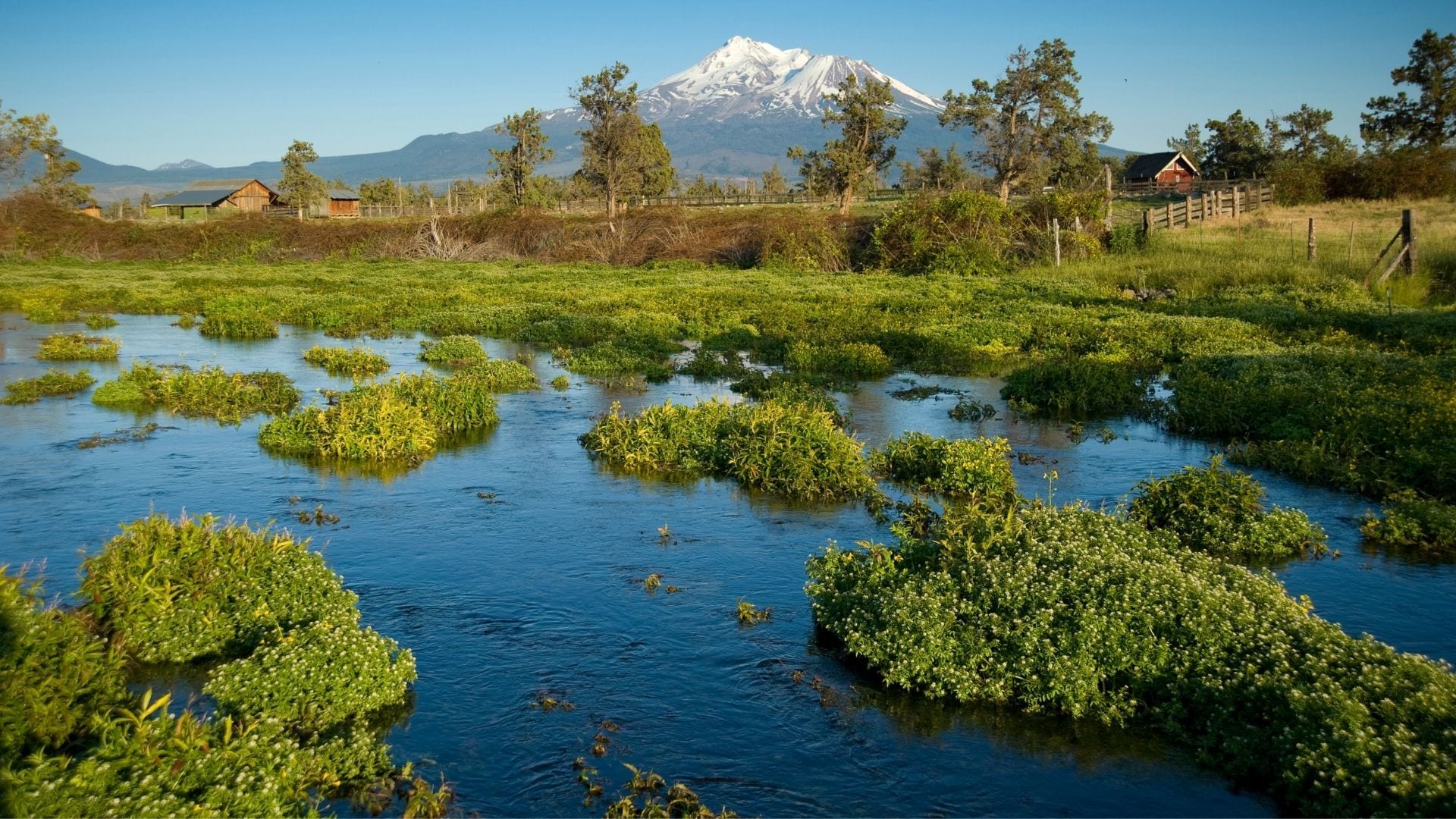
What do we know about Fish Food?
Most streams and rivers are naturally unproductive, and the idea that a rearing fish could offset small increases in water temperature with abundant prey has, therefore, received little attention. There are a few studies, however, that have suggested the importance of food in balancing metabolic differences in streams or other habitats. Mostly notably, Bisson et al. (1988) found exceedingly high rates of juvenile coho salmon production under extremely warm water temperatures (~77 °F) and suggested that the abundance of stream invertebrates played an important role in those observations.
Dr. Jacob Katz and his colleagues more recently found that the growth rates of floodplain reared juvenile Chinook far exceeded those reared in the adjacent Sacramento River and attributed the findings, among other factors, to the availability of zooplankton (Corline et al 2016, Katz et al. 2017). Osterback (2018) recently suggested that juvenile coho and steelhead exhibited positive growth rates in a food-rich lagoon near Santa Cruz, California, despite relatively warm water temperatures and low dissolved oxygen levels. Conclusively linking food as the primary mechanism affecting juvenile salmon growth in a warming and natural stream environment, however, has been difficult.
Photo: Shasta River by Val Atkinson
Testing our theory
A few years back, we decided to test a simple question. Could fish compensate for increases in water temperature if high densities of prey were available under natural stream conditions? The focus on “natural conditions” (e.g., a stream or river) was key to our scientific pursuit.
Numerous physiological studies have shown that salmonids can compensate for increases in water temperature when enough food is available. These studies, however, are almost always conducted in the laboratory, where fish are fed to satiation in tanks (an uncommon if not entirely rare phenomenon in the wild).
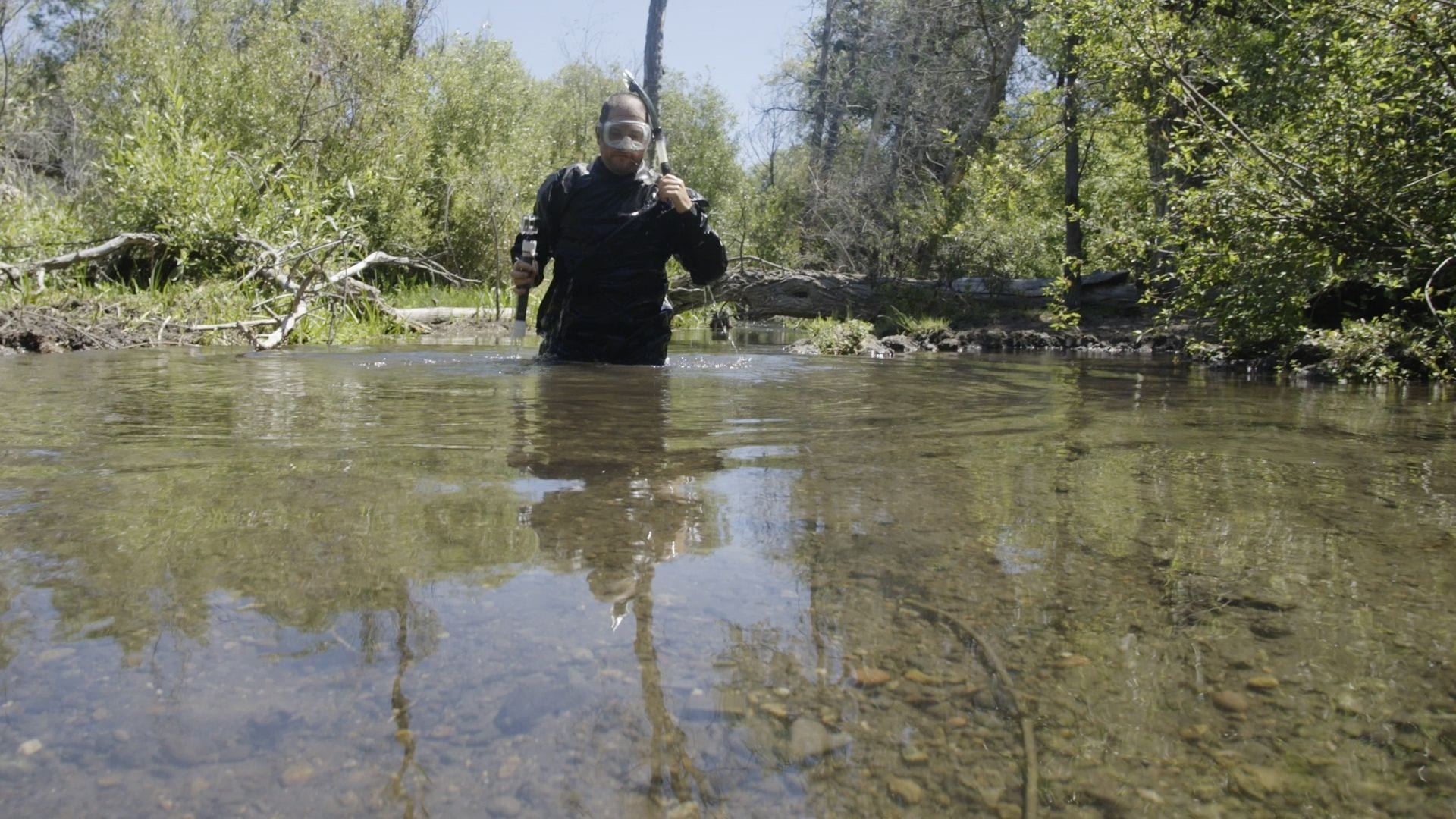
The Study
Nearly a decade earlier, we had begun studying Big Springs Creek and the Shasta River, two large volcanic spring-fed rivers, and had documented prolific densities of aquatic invertebrates. We decided that this ecosystem was perfect to test our question on food, temperature, and fish growth. Over a period of two weeks, we constructed 25 fish enclosures over a naturally occurring gradient of food and temperature. The temperature-food gradient was key in testing our question.
Enclosed fish located near the springs of Big Springs Creek experienced the benefit of very cold water with relatively little food, while those downstream experienced warmer water with high densities of aquatic invertebrates. Juvenile coho were reared during summer over temperatures ranging from 11.1 to 24.7 ºC (or between 52 ºF and 76.5 ºF). All fish were statistically the same size when they were introduced to their respective enclosures and measured and weighed at the beginning and end of the experiment.
Photo: Dr. Lusardi preparing to snorkel the Little Shasta River by Pusher HQ Studios
Results show abundant food can offset increased temperature
60 days later we pulled the fish and tabulated the results. We found that juvenile coho were able to compensate for increases in temperature when sufficient food was present. Coho growth rates peaked at a mean temperature of 16.6 ºC (~62 ºF) and a maximum temperature of 21.1 ºC (~70 ºF). The growth rates of these fish were six-fold greater than those reared in the coldest study reach (mean temperature: 13.0 ºC (55.4 ºF); maximum: 16.0 ºC (~61 ºF)). Further, the statistics specifically pointed to food as being the primary mechanism affecting observed differences in fish growth.
There are a couple caveats to this study. First, the findings should not be misconstrued as an endorsement of warmer water temperatures in lieu of functioning stream habitat. Elevated water temperatures have scientifically been shown to negatively affect coldwater species in numerous ways. Further, the fish in this study were unable to move to colder water during the experiment because they were enclosed in cages, thus forcing them to experience a range of conditions throughout the experiment.

However, the implications of the study are important. This was the first study to unequivocally show that fish food really does matter and that it can negate small increases in water temperature with respect to growth. The study also appears to suggest that productive habitats will undoubtedly become disproportionally important in the recovery of salmonids, particularly under a warming climate.
Spring-fed rivers, floodplains, estuaries, lagoons and other productive habitats are important because they provide both habitat diversity and high levels of productivity within an increasingly homogenous landscape.
Photo: Shasta River by Mike Wier
So, can fish eat their way out of climate change?
Probably not. However, even though food has received relatively little attention as a key component to fish habitat, it may just be one of the most important habitat components to consider under a changing climate.
Dr. Robert Lusardi is the California Trout-UC Davis Wild and Coldwater Fish Scientist.
The scientific publication referenced above appeared in the Canadian Journal of Fisheries and Aquatic Sciences:
Lusardi, R.A. Hammock, B.G., Jeffres, C.A., Dahlgren, R.A., and Kiernan, J.D. 2020. Oversummer growth and survival of coho salmon (Oncorhynchus kisutch) across a natural gradient of temperature and prey availability: an in situ enclosure experiment. Canadian Journal of Fisheries and Aquatic Sciences 77(2): 413-424.
Other literature cited:
Bisson, P. A., Nielsen, J. L., & Ward, J. W. (1988). Summer production of coho salmon stocked in Mount St. Helens streams 3-6 years after the 1980 eruption. Transactions of the American Fisheries Society, 117(4), 322-335.
Corline, N. J., Sommer, T., Jeffres, C. A., & Katz, J. (2017). Zooplankton ecology and trophic resources for rearing native fish on an agricultural floodplain in the Yolo Bypass California, USA. Wetlands Ecology and Management, 25(5), 533-545.
Katz, J. V. E., Jeffres, C., Conrad, J. L., Sommer, T. R., Martinez, J., Brumbaugh, S., . . . Moyle, P. B. (2017). Floodplain farm fields provide novel rearing habitat for Chinook salmon. Plos One, 12(6), e0177409.
Osterback, A.-M. K., Kern, C. H., Kanawi, E. A., Perez, J. M., & Kiernan, J. D. (2018). The effects of early sandbar formation on the abundance and ecology of coho salmon (Oncorhynchus kisutch) and steelhead trout (Oncorhynchus mykiss) in a central California coastal lagoon. Canadian Journal of Fisheries and Aquatic Sciences.
Wenger, S.J., et al. 2011. Flow regime, temperature, and biotic interactions drive differential declines of trout species under climate change. Proceedings of the National Academy of Sciences 108: 14175-14180.





